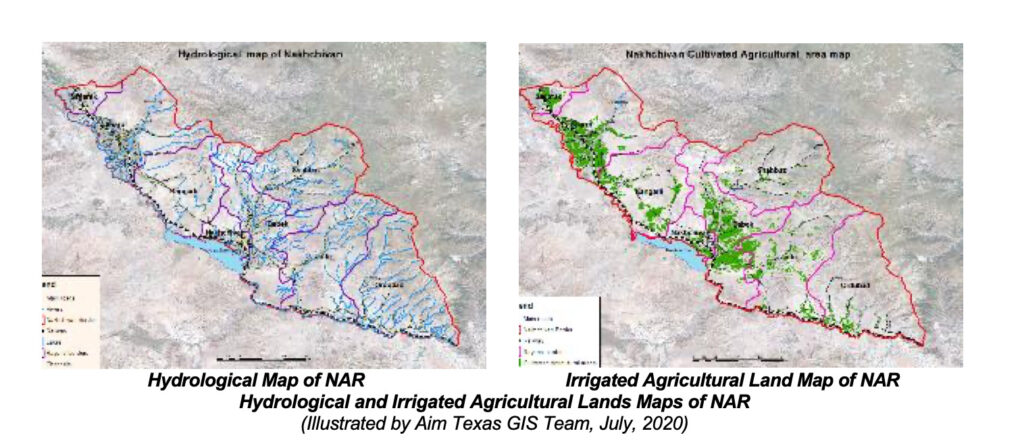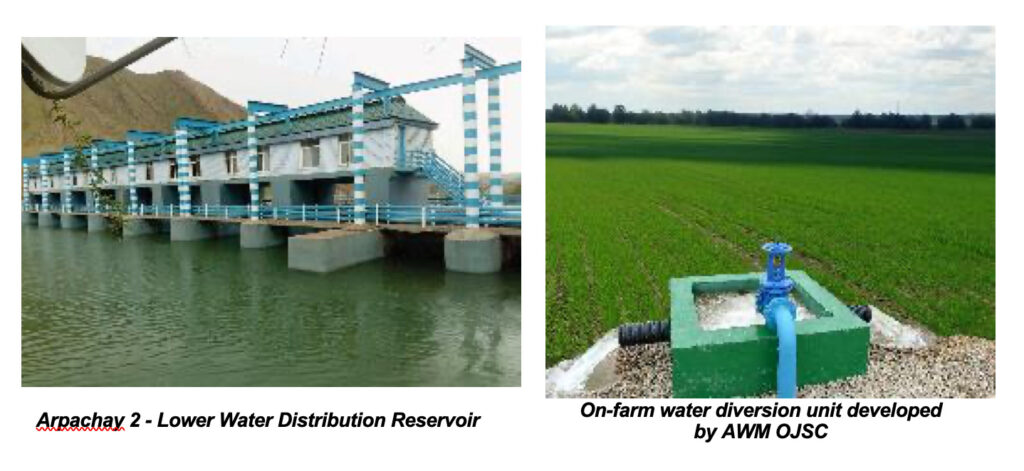
By: admin
Nakhchivan, August 19, 2019
Aim Texas Trading, LLC Overseas Management Group (AIMOMG) has been shortlisted in the tender in providing consulting services as Sole Consultant for Preparing Irrigation and Drainage System Development in Nakhchivan Autonomous Republic (ADB TA9945 AZE).
The Asian Development Bank (ADB) will finance consulting services for the above project under a Technical Assistance (TA) grant to the Government of Azerbaijan.
ADB now seeks proposals for the consulting services (Services) as described in the Terms of Reference. ADB will select the firm using Quality and Cost-Based Selection (QCBS) and Full Technical Proposal (FTP) following this Request for Proposal (RFP) and the Guidelines on the Use of Consultants by Asian Development Bank and Its Borrowers.
This RFP has been sent to the following shortlisted Consultants:
| Consultant Firm/Associations | Nationality | |
| 01. | Joint venture between ART Environmental Technologies Inc. and WAPCOS Limited | Turkey, India |
| 02. | Joint venture between Agriconsulting Europe SA and ARPA Consulting in association with Witteveen+Bos International Projects B.V. | Beligum, Netherlands, Azerbaijan |
| 03. | Aim Texas Trading LLC | USA |
| 04. | Joint venture between SOFRECO (Societe Francaise de Realisation d’Etudeset de Conseil) and BETS Consulting Services Ltd. | France, India |
| 05. | Joint venture between TUMAS Turkish Engineering, Consulting and Contracting Co. and National Engineering Services Pakistan (Pvt.) Limited | Turkey, Pakistan |
The project will support rehabilitation and modernization of the irrigation and drainage networks serving about 23,230 ha of land in the Nakhchivan Autonomous Republic (NAR) Amelioration and Water Management Open Joint Stock Company (NAR AWM OJSC) – formerly State Amelioration and Water Management Committee (SAWMC) of NAR. The project will also help strengthen institutional capacity of the irrigation system management and operators. This consultancy assignment will be conducted under authority of NAR AWM OJSC and ADB Task Team in accordance with Terms of References (TORs), and will include two indicative outputs:
- Irrigation and drainage infrastructure improved and/or constructed; and
- Capacity of Amelioration and Water Management Open Joint Stock Company (NAR AWM OJSC) and water user associations (WUAs) in irrigation and project management improved.
The scope of work under this TA stipulates that the consultants to assist NAR AWM OJSC (formerly SAWMC of NAR) in obtaining the outputs aforementioned for improving the irrigation and drainage infrastructures in all NAR and WUAs’ irrigation and drainage system performance. The project will be developed in two phases:
Phase 1: will have a three-month performance period, and include
- Conduct rapid performance assessment of the current irrigation system and identify key weaknesses and constraints in the NAR;
- Carry out hydrologic and hydraulic modelling to assess various water sources and whether remodeling of the canal networks is required; and
- Assess whether there is a need to increase pumping capacity and/or canal flow capacity; and
- Recommend project scope for detailed feasibility studies.
Phase 2: will have a 16-month performance period after commencement. The consultant will then conduct full-fledged feasibility studies for irrigation and drainage schemes identified in the first phase to meet both government and ADB requirements, undertaking due diligence in terms of technical assessment, economic and financial analysis, financial management assessment, procurement capacity and risk assessment, environmental and social safeguards, and social and gender assessment.
NAR is a landlocked exclave of the Azerbaijan. It covers 5,500 km2 with a population of 452,800 in 2018, of which rural population accounts for more than 70%. NAR borders Armenia to the east and north, Iran to the south and west, and Turkey to the northwest. NAR is situated in the south-east of the Transcaucasia plateau. The climate of Nakhchivan is sharp continental. One third of the territory is composed of the Araz river plains.
NAR includes seven administrative districts – Babek, Julfa, Ordubad, Sadaraq, Sharur, Kangarli and Shahbuz-seven cities, six settlements and 208 villages. The capital city is Nakhchivan city. Average density of the population in the economic region is 70 people per sq. km.
Nakhchivan economic region is located at the south-eastern end of the small Caucasus mountains. The relief of NAR is typical upland and 32 % of area (plain along with the Araz river) is located 600-1000 meters higher than sea level, 48 % up to 2000 meters and 20 % is located at high over 2000 meters.

Irrigation is essential to increasing and sustaining agricultural production in most regions of the Azerbaijan, including NAR. NAR has about 52,000 ha of irrigated land out of a total cultivated land of about 61,531 ha.

Almost 90% of NAR’s agricultural production is obtained from irrigated land. The project area is currently served by several surface and groundwater irrigation schemes built in the late 1960s and early 1970s, which source water mainly from the four reservoirs in NAR and the Araz river. The aging irrigation and drainage systems have fallen into disrepair and are in need of urgent rehabilitation. SAWMC estimates that about 30% to 50% of water are lost in major irrigation canals, which has resulted in groundwater tables rising to the planting layer and causing salinization of surrounding lands. Apart from that, as a main irrigation method, traditional “surface irrigation” or “flooding” are applied in the field.
Water sources are mainly from the four reservoirs (Arpachay 1 and 2, Araz, and Vayker in Sahabuz) and the Araz river. The aging irrigation and drainage systems have fallen into disrepair and are in need of urgent rehabilitation.

Salinity is a serious problem in NAR. The main causes of salinization are the relatively high elevation of the Araz River, which restricts drainage from the Ara River plain. Too much irrigation water raises the groundwater table and, with poor drainage, salts are not well leached from the soils. Also, the common clay content of soils promotes salinity due to low permeability and restricted effect of rainfall on leaching soils. In order to reclaim lands from salinization, soil tillage to increase infiltration rates, and periodic leaching of soils by irrigation are required.
However, the recent efforts Government of NAR is worth to mention to rehabilitate and remediate I&D structures in NAR, see following pictures.
